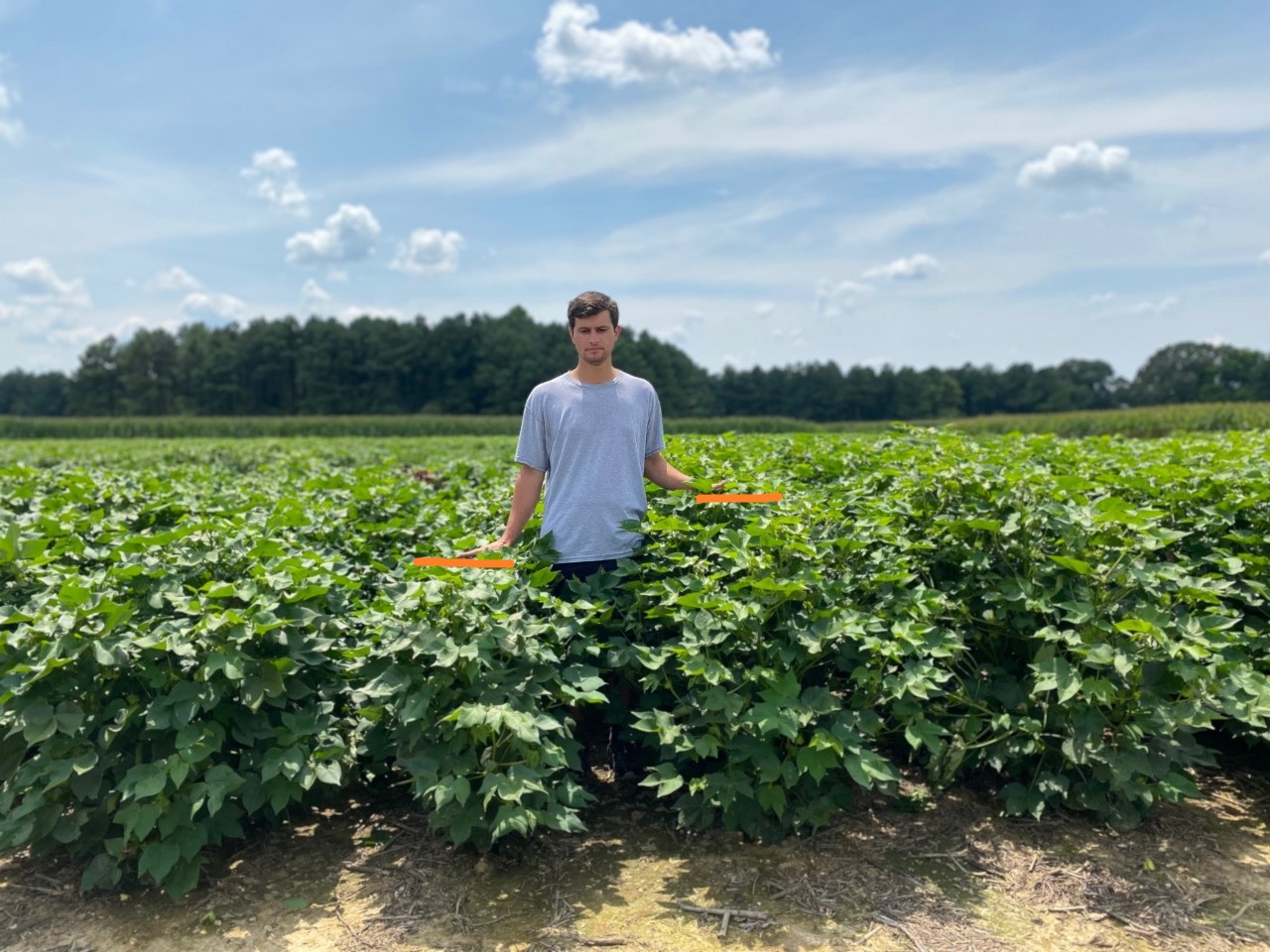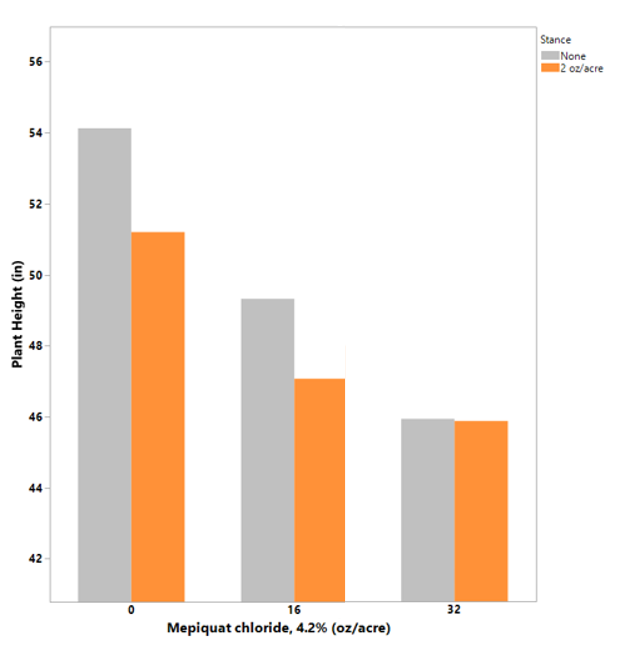
July rains and a rain on the first of August supported rapid growth in many areas. Over the past few days, two of the most common questions have become, ‘How much mepiquat chloride is needed to slow growth?’ and ‘should I also include Stance in the application?’ In this article, we highlight some interesting results from a preliminary study conducted during 2020.
A little background- ‘spiking’ an application of a straight mepiquat chloride product with 2 oz of Stance has become common on strong ground planted to aggressively growing varieties. These ‘spiked’ applications will usually be 16-24 oz of a 4.2% mepiquat chloride product plus 2 oz of Stance. For those that are not familiar with Stance- the product contains 8.4% mepiquat chloride AND 2.1% cyclanilide and use rate falls between 2 and 4 ounces/acre. Cyclanilide inhibits auxin transport and gibberellic acid synthesis. You may recognize the active cyclanilide- it is also in Finish and Terminate and cyclanilide is the main reason Finish provides some level of regrowth control.
A study was established during 2020 to capture the potential impact of spiking Stance into a straight mepiquat chloride application under very aggressive growing conditions. The experiment was conducted in Milan, TN in a field of DP 1646 B2XF. Prior to applying treatments, only one application of mepiquat chloride had been made; an initial application of 8 oz/acre was applied to all treatments prior to flower.
On July 29th, treatments received 0 (check), 16, 24, and 32 oz application rate of MC respectively, along with 2 oz of Stance©. The second set of treatments only received the application of MC as occurred in set 1, but without the addition of Stance©. In total eight combinations of MC+ Stance© were tested in 64 plots. Plant height collected from a subset of treatments on Sept. 3rd is graphed below; mepiquat chloride rate is on the bottom axis and plant height is on the vertical axis. Orange bars received Stance @ 2oz/acre. Grey bars did not receive Stance.

There are several significant trends to note from this data. First, there is almost no difference between 32 oz/acre mepiquat chloride and 32 oz/acre mepiquat chloride + 2 oz/acre Stance. In contrast, the addition of 2 oz/acre Stance with 16 oz/acre mepiquat chloride did limit internode elongation more than 16 oz/acre mepiquat chloride alone.
This data shows we can reach similar plant heights either with or without Stance by adjusting mepiquat chloride rates. By extrapolating this data, it is clear that we should be able to generate a similar plant height response with 24 oz/acre mepiquat chloride OR 16 oz/acre mepiquat chloride + 2 oz/acre Stance. These results are in agreement with a Beltwide study completed several years ago- if you would like to read more, click here for the full publication by Dodds et al., 2010. To very briefly summarize their data, most all PGRs can generate a similar response when used at comparable rates.
One other point- this trial did not evaluate sequential applications. During several recent calls, I’ve been asked if a very strong rate is appropriate. I prefer a 16-24 oz/acre application followed by another 16-24 oz/acre application, applied as needed, 7-10 days after the first application instead of very strong rates applied at one timing.
Take home? Our data indicates ‘spiking’ mepiquat chloride applications with Stance can work, but it may not be necessary to reach the maximum suppression of internode elongation.

